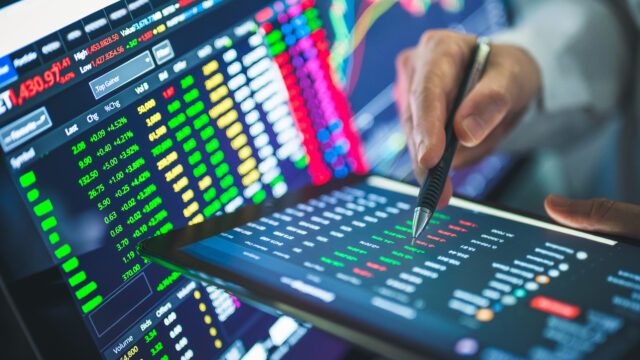As markets start to price in more US Federal Reserve rate cuts next year, the window of opportunity to benefit from buying long duration bonds and assets is closing.
This is according to J.P. Morgan Asset Management’s Apac chief market strategist Tai Hui, who said that the recent six-week rally in stocks and bonds is a good indication of how next year’s trading will unfold.
“Since the middle of October, we’ve seen strong stock performance, a sharp drop in bond yields, higher gold prices and a weaker dollar. This is very much a snapshot of what we expect to see in 2024,” he told a media briefing in Hong Kong this week.
After interest rates touched levels not seen in decades during 2023, investors have been tempted by the high yields on offer from cash deposits returning upwards of 5%.
But as investors prepare for 2024, the strategist said it is time for investors to “get back on the road” and take positions in stocks and bonds ahead of the Fed cutting rates.
“We’ve noticed a lot of Asian investors have been parking their capital in time deposits, or cash equivalent assets, which we think will underperform in 2024,” Hui said.

“Over 2024, the total return for fixed income should be better than cash. In the last few weeks we’ve seen exactly that.”
He pointed to the capital appreciation investors would get from long-duration bonds in the event of interest rate cuts from the Fed.
“For 10-year treasuries, if rates fall by 1% you get about 13% in total return over a year. If rates go up another 1%, the total return is minus 3%. So your risk reward actually is very much skewed towards falling rates,” Hui, (pictured) explained.
He added: “I think the window of opportunity to lock in those high rates will eventually close. That could well be in the next few months.”
“Think about the last six weeks. The ideal time to lock in 10-year yields would have been when cash rates were at 5%. With cash rates, what you’re going to get is lower yields, but no capital appreciation.”
This is why the strategist prefers fixed income with lengthened duration, starting with high quality, followed by US and Asian equities going into 2024.
Current rate cut positioning is too optimistic
However, Hui conceded that the market has been too optimistic in expecting the Fed to start cutting rates in the first half of next year.
“I suspect there are also people starting to bet that the high rates could start to impact things like commercial real estate or private markets and there are some hidden risks that we’re not aware of or not paying attention to,” he said.
“The other thing to bear in mind is that the futures market’s job is not to predict interest rates. Instead, it’s driven more by position-taking and other technical factors.”
This aggressive positioning around Fed rate cuts next year could make the market vulnerable to corrections in the near term if inflation data or growth data surprises to the upside, he added.
“As we all know, markets don’t move in straight lines, so there could be some period of consolidation or even correction and that to me is actually a good opportunity to continue to add stocks and bonds,” he said.
When it comes to Asian equities, he prefers stocks in exporting markets such as Taiwan and South Korea, as well as high dividend payers.
He also expects the US dollar to weaken on the back of lower Treasury yields, which would also benefit Asian equities and fixed income.

















